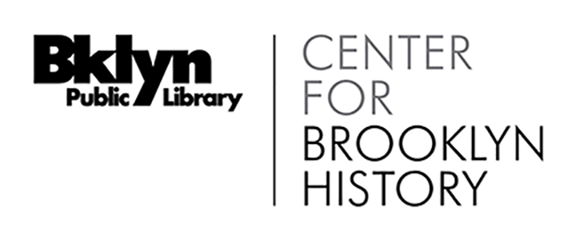Third Ward Enlistment Committee records
Call Number
Date
Creator
Extent
Language of Materials
Abstract
Before the first Union conscription law was enacted in March of 1863, it was left to state and local officials to fill Union troop quotas. In the state of New York, cities were allocated troop quotas. At the time of the Civil War, both the City of New York and the City of Brooklyn were comprised of small political units, or wards, that were in turn allocated troop quotas. The Third Ward Enlistment Committee was responsible for filling the ward's quotas. Post war, as of 1867, Third Ward boundaries consisted of what is now part of the neighborhoods of Brooklyn Heights, Boerum Hill, Cobble Hill, and Park Slope. The Third Ward Enlistment Committee records, housed in three folders, include a treasurer's account book, 1862 to 1871; a volunteer's journal, 1862; and three subscription journals for troop quotas, 1862.
Historical Note
In the spring of 1862, early Union victories gave many in the North the impression that the end of the war was near. In actuality, the bloodiest battles of the war had not yet happened. By the summer of 1862, the need to muster more Union troops became dire due to devastating Union defeats. Further, news of the high number of dead and wounded soldiers was spreading and Union enlistment rates were dropping dramatically. In August of 1862, President Lincoln requested an additional 300,000 volunteers from the Northern states. If the federal quotas were not met, conscription would have to be instated.
Before the first Union conscription law was enacted in March of 1863, it was left to state and local officials to fill Union troop quotas. In the state of New York, cities were allocated troop quotas. At the time of the Civil War, both the City of New York and the City of Brooklyn were comprised of small political units, or wards, that were in turn allocated troop quotas. Wards were geographically defined areas that were governed by elected representatives. In the City of Brooklyn, each ward elected one representative who served for two years on the Board of Supervisors (later known as the Board of Alderman).
In 1862, the City of Brooklyn had 19 wards. The towns of Gravesend, Flatbush, Flatlands, and New Utrecht (all of which were later annexed by the City of Brooklyn) also had their own wards. Post-war, as of 1867, the City of Brooklyn's Third Ward boundaries consisted of the area defined by Fulton Street, Flatbush Avenue, 4th Avenue, Bergen Street, Court Square, Atlantic Avenue, and Boerum Place. Today, this would include parts of the neighborhoods of Brooklyn Heights, Boerum Hill, Cobble Hill, and Park Slope.
Sources:
- "1867 Ward Boundaries." Brooklyn Genealogy Information. http://www.bklyn-genealogy-info.com/Ward/1867.Ward.Bounds.html (accessed July 21, 2010).
- Richardson, James F. "Wards." In The Encyclopedia of New York City. Edited by Kenneth T. Jackson. New Haven, Conn.: Yale University Press; New York: New-York Historical Society, 1995.
- Donald Dale Jackson. "Mustering the Legions." In Twenty Million Yankees: The Northern Homefront, 86-111. Alexandria, Va.: Time-Life Books, 1985.
Scope and Contents note
The Third Ward Enlistment Committee records, housed in three folders, include a treasurer's account book, 1862 to 1871; a volunteer's journal, 1862; and three subscription journals for troop quotas, 1862.
The Third Ward Enlistment Committee treasurer's account book includes the names of subscribers to the Third Ward fund, the amount of money each subscriber donated, and the date of donation. Entries begin on August 27, 1862 and end on February 15, 1871. The treasurer was John J. Studwell. The account book also contains news clippings glued inside it. The clippings pertain to troop quotas and the impending draft. An example of the information included in the clippings is a plea from the Executive Committee of the Ninth Ward in Brooklyn, to the Finance Committee of the Third Ward (said to be the richest ward in Brooklyn at the time with an accumulated Patriotic Fund of $10,000), for help in paying the $25.00 war bounty promised to each of the Ninth Ward volunteers. The plea is signed by the Executive Committee of the Ninth Ward, September 8, 1862.
The volunteer's journal lists the names of 62 Civil War volunteers from the Third Ward, as well as their place of residence, date of enlistment, regiment, company, occupation, and family status (if they were single, married, or had children).
The subscription journals are inscribed with the following text: "At a Meeting of the Citizens of the Third Ward, held at the Polytechnic Institute, on Tuesday Evening, August 26th, 1862, for the purpose of adopting such measures as may be deemed necessary to aid in raising the quota of troops apportioned to the Ward, the following Subscriptions were made." Following the inscription is a list of names of members appointed to solicit subscriptions, as well as several officers of the Committee (B.D. Skillman, Chairman; A.V. Blake, Secretary; and John J. Studwell, Treasurer). Each journal lists the names of financial donors and the amount of money donated. The journals belonged to M. Daniel Chauncey, S. Ryder, and Ezra M. Frost.
Subjects
Genres
Conditions Governing Access
Open to researchers without restriction.
Preferred Citation
Identification of item, date (if known); Third Ward Enlistment Committee records, ARC.062, Box and Folder number; Brooklyn Historical Society.
Immediate Source of Acquisition
Gift of Irving D. Mead, 1922.
About this Guide
Processing Information note
Minimally processed to the collection level.
This collection combines the accessions 1973.278 and 1977.090.
